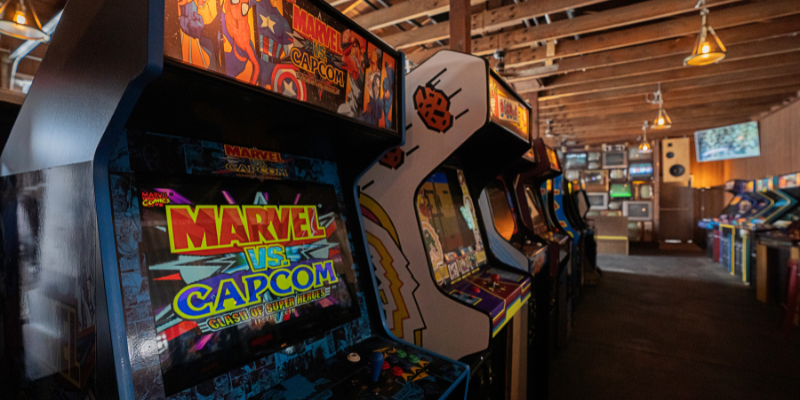Advertisement
Microsoft has released an advanced AI model named Muse, developed exclusively for game development. The global AI model utilizes generative AI methods to design gameplay scenarios and visuals independently, significantly accelerating the game development process. Muse was created by Microsoft Research in partnership with Xbox Game Studios, demonstrating a new frontier in artificial intelligence's ability to advance game developers' capacity to prototype, test, and iterate more effectively.
Muse is a paradigm revolution in game creation, automating what generally takes large teams and months of labour labour. The AI interprets intricate game worlds and player inputs to create realistic gameplay that reflects human play styles, creating promising opportunities for both AAA studios and independent developers. With the gaming market expanding at a rapid pace, tools like Muse will be necessary to keep innovation alive and meet the need for new experiences.

Muse sets itself apart from earlier AI models because it goes beyond just creating static images or text. It actively generates both game visuals and controller inputs. By anticipating future gameplay sequences from just a short initial prompt, Muse can mimic the flow of a game in real-time. This represents a significant leap forward, as it grasps the 3D physics and dynamics of game worlds, crafting coherent and dynamic sequences that evolve naturally.
This ability enables developers to visualize and tinker with game mechanics without having to build every single detail manually. Muse has a solid understanding of player behaviours and game rules, enabling it to create realistic interactions and unexpected gameplay twists. This can spark new game ideas or allow for quick testing of design changes. The interactive generation of gameplay is truly a game-changer for the speed and flexibility of game development workflows.
Muse has been trained on an enormous dataset that includes over a billion images and millions of controller input sequences gathered from popular video games, like the 2020 action title Bleeding Edge. By examining how players interact with game environments, the model identifies patterns in movement, timing, and reactions to the game's physics engine.
When given a one-second clip of gameplay, Muse can predict what will happen next, frame by frame, including the actions players take with their controllers, to create a smooth and immersive gameplay experience. This is made possible through sophisticated machine-learning architectures that merge video generation with sequential action prediction. What sets this model apart from other AI systems is its ability to seamlessly combine visual and interactive elements, making it ideal for crafting gameplay scenarios.
Muse was trained using enormous datasets with over a billion images and millions of controller input sequences from current video games. By analyzing how players engage with gameplay environments, the model can predict the next step in gameplay sequences. Given a one-second slice of gameplay, Muse can generate what comes next frame by frame, and the player moves on its own, creating a long, playable experience. This combination of visual and action prediction is revolutionary for AI in interactive entertainment.
The launch of Muse has the potential to change game development workflow. With gameplay ideation automated, developers can spend less time on tedious mechanics coding and more time on creative work, such as storytelling, character art, and level design. Additionally, Muse can provide smaller indie game studios with access to powerful prototyping tools that were previously reserved for major studios. The democratization of game development has the potential to drive innovation and creativity throughout the industry.

While Muse shows great promise, there are still hurdles to overcome in perfecting AI-generated gameplay to ensure it meets standards of quality, creativity, and player enjoyment. It's essential that AI maintains narrative coherence in games and strikes a balance between AI-generated content and human creativity. Moreover, we need to thoughtfully consider the ethical implications of AI on game development jobs and originality as these tools become more mainstream.
Microsoft’s Muse marks a significant advancement in the realm of AI-powered video game development. By combining visual generation with the ability to predict player actions, Muse gives developers an incredible tool to create, test, and innovate at an unprecedented pace. As AI technology continues to progress, models like Muse are set to transform the game development landscape, making it more accessible and creative while also enhancing the overall player experience.
This groundbreaking innovation showcases the increasing integration between AI and interactive entertainment, paving the way for a future where games are even more immersive, personalized, and inventive. Microsoft's dedication to open collaboration ensures that Muse will serve as a vital resource for developers worldwide, propelling the next wave of gaming.
Advertisement

How to use the ternary operator in Python with 10 practical examples. Improve your code with clean, one-line Python conditional expressions that are simple and effective

How RLHF is evolving and why putting reinforcement learning back at its core could shape the next generation of adaptive, human-aligned AI systems

Ready to run powerful AI models locally while ensuring safety and transparency? Discover Gemma 2 2B’s efficient architecture, ShieldGemma’s moderation capabilities, and Gemma Scope’s interpretability tools

Think Bash loops are hard? Learn how the simple for loop can help you rename files, monitor servers, or automate routine tasks—all without complex scripting

Need to save Python objects between runs? Learn how the pickle module serializes and restores data—ideal for caching, model storage, or session persistence in Python-only projects

How AutoGPT is being used in 2025 to automate tasks across support, coding, content, finance, and more. These top use cases show real results, not hype

How can Google’s Gemma 3 run on a single TPU or GPU? Discover its features, speed, efficiency and impact on AI scalability.

Learn the regulatory impact of Google and Meta antitrust lawsuits and what it means for the future of tech and innovation.

How using Xet on the Hub simplifies code and data collaboration. Learn how this tool improves workflows with reliable data versioning and shared access

AWS' generative AI platform combines scalability, integration, and security to solve business challenges across industries

Anthropic secures $3.5 billion in funding to compete in AI with Claude, challenging OpenAI and Google in enterprise AI

How the world’s first AI-powered restaurant in California is changing how meals are ordered, cooked, and served—with robotics, automation, and zero human error